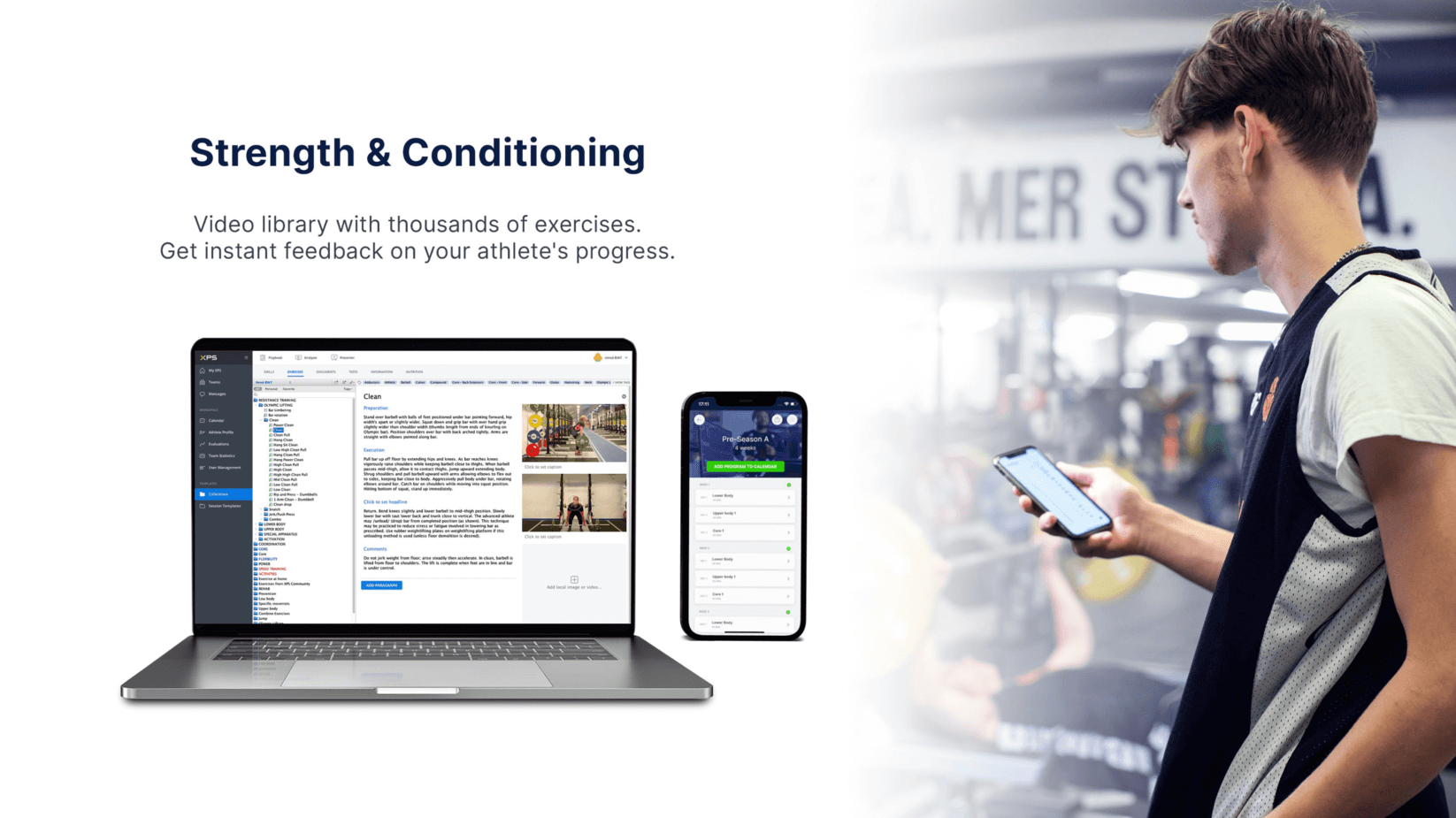New Feature: Import & Export Directly from Monitoring
A super handy update just landed in your XPS Network: you can now import and export directly from the...
Read MoreDecember 6, 2021
5 min reading
In the strength and conditioning industry, especially when competitive sports and coaching is concerned, General Physical Preparedness (GPP) is one of the most widely misunderstood terms.
In this XPS Monday Series article, we go over what this means and how coaches can avoid mistakes when training players!
According to Mel Siff’s popular sports coaching and training book, Supertraining, which regularly features in top 5 lists for coaches, she describes GPP as: “Intended to provide balanced physical conditioning in endurance, strength, speed, flexibility, and other basic factors of fitness.”
Endurance, strength, speed, flexibility, and other factors of physical fitness. Everything counts and every action matters when training players to improve General Physical Preparedness (GPP). At the same time, inactions matter. Ensuring players have the right training to rest ratio, to ensure they don’t get injured or exhausted from too much training.

Now let’s take a look at the five most common misconceptions, and ways coaches can improve players GPP.
One of the problems with understanding GPP is that people think its only about high-volume/low-intensity training. That’s not really the case. The aim is to improve athletes endurance, strength, speed, flexibility, and other factors of physical fitness.
Which means using a wide range of training methods and tools, suitable for your team members and sporting needs. Whether you sprint, jump, throw medicine balls, or lift weights; all of this is part of GPP.
Tools such as dumbbells/sleds/bands aren’t only for GPP. When coaches and sports scientists create a strength and conditioning program, the tools athletes use perform a valuable GPP function.
The aim of GPP is to achieve physiological adaptations, which means being tool-agnostic when creating programs to improve fitness, strength, stamina, flexibility and speed.
Athletes need both. Sports-specific training should be increased during the competitive seasons.
Avoiding overdoing exercise, training and fitness activities is a difficult one that every coach juggles with. However, a combination of sports-specific and GPP training is what players need to be at their best.
One type of training and conditioning isn’t better than the other. Sports mimicry plays a role in GPP. This is when coaches create specialised exercises that mimic skills they need on the field, as a smart way of improving on-field performance.
Coaches should consider the goal of GPP to fill skills gaps that aren’t addressed in sports-specific training. Not to overload them with even more of the same types of exercises athletes are getting during sports-specific training. Focus on where you know there are gaps. Use XPS to identify these.
When it comes to athlete training, a comprehensive strength and conditioning program is needed year-round. By definition, this is GPP.
Coaches who wait for the off-season to worry about strength, conditioning and physical fitness will have a team that lacks the fitness, speed, strength and overall stamina to perform well.
Although the focus should always be on sports-specific training and game preparedness, neglecting GPP until the off-season is a short-sighted strategy. Naturally, this means strength and conditioning should be reduced in the competitive season, to avoid player burnout and injuries. But not forgotten.
With the right balance of training and conditioning players can be at their best in the seasons when they need to be at their best.
Not. At. All.
Athletes in every sport benefit from GPP.
Yes, in some sports they benefit more than others. But if your athletes aren’t generally fit, possessing the endurance, strength, speed, flexibility, and other factors of physical fitness needed, then they won’t perform at their best.
Consider these questions if you are wondering whether GPP applies to your sport:
If the answer to these is yes, then you definitely need to implement GPP training and fitness sessions. It’s not only for football, rugby, and a handful of other sports. GPP benefits every player in almost every sport. If you want to improve player GPP, use XPS Network to assess where your players are at right now and assess the gaps that need filling.
This is how XPS users Leicester Riders use XPS Network to manage the players overall GPP, create their workout plans and monitor their training load and readiness.
Would your team, club, youth association, or sports association benefit from XPS and its wide range of features? Contact XPS Network if you want to find out more, or Sign-up for a Free Trial today.
A super handy update just landed in your XPS Network: you can now import and export directly from the...
Read MoreWe’re proud to welcome FC Elva to the XPS Network community as our newest partner. The ambitious Estonian side,...
Read MoreXPS Network was proud to take part in the 5th ESCCA Summit, held in Torino on June 27–28, 2025....
Read MoreThank you!
Our representative will get back to you soon with time suggestions for an online meeting.
If you have any questions contact us at support@sidelinesports.com
Schedule a short online meeting with our representative
Try free XPS 14-days trial right now No credit card required